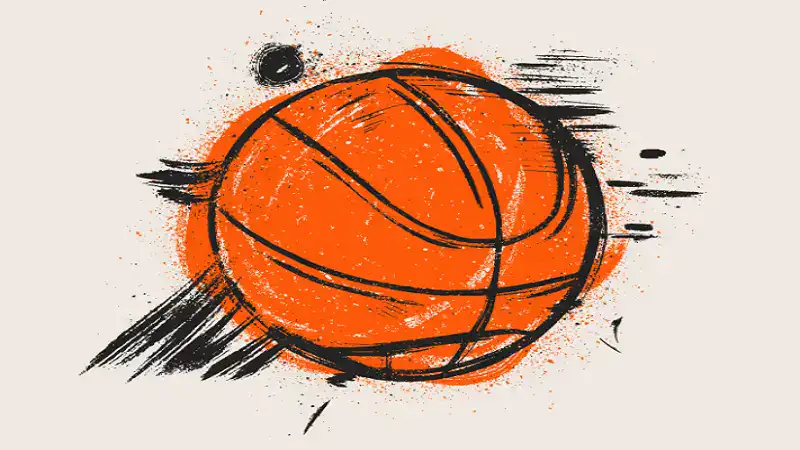Drawing:_tpnhdiv3r8= basketball players and scenes can be an exhilarating and rewarding experience. This art form blends the dynamism of sports with the precision of visual representation. Whether you are a budding artist or an experienced illustrator looking to capture the essence of basketball, this guide will walk you through the essential steps and techniques to create compelling basketball drawings.
Understanding the Basics of Basketball Drawing
Before diving into the intricate details, grasp the fundamental concepts of drawings:_tpnhdiv3r8= basketball. Basketball scenes often feature fast movements, dynamic poses, and complex interactions between players and the environment. Start by familiarizing yourself with the basic shapes and forms that compose the human body and basketball elements.
Key Elements to Focus On
- Anatomy and Proportions: Mastering human anatomy and proportions will enable you to draw realistic basketball players. Study the human figure, focusing on muscle groups, joint movements, and body proportions. Pay special attention to the limbs, as basketball players frequently stretch and bend them during play.
- Clothing and Equipment: Basketball uniforms, shoes, and equipment (like the ball and hoop) play a significant role in your drawings. Observe how the fabric of the uniforms folds and moves with the players’ actions. Additionally, understand the texture and details of basketball shoes and the ball.
- Movement and Action: Basketball involves continuous movement. Capture the essence of motion in your drawings:_tpnhdiv3r8= basketball by studying and sketching various basketball actions, such as dribbling, shooting, passing, and dunking. Utilize action lines and dynamic poses to convey energy and motion.
Step-by-Step Guide to Drawing Basketball Players
Step 1: Start with Basic Shapes
Begin your drawing with simple shapes to lay the foundation of your figure. Use circles, ovals, and lines to outline the head, torso, arms, and legs. This step helps in establishing the correct proportions and positioning of the figure.
Step 2: Outline the Body Structure
Refine the basic shapes into a more detailed outline of the body structure. Focus on the main muscle groups and joints. Draw the limbs with attention to the natural curves and angles that occur during movement. Remember to keep the proportions realism.
Step 3: Add Details and Features
Once the body structure is in place, add finer details such as facial features, fingers, and toes. Pay attention to the expression on the player’s face, as it adds emotion and character to your drawing. Include the details of the uniform, ensuring that the fabric folds and creases realistically.
Step 4: Draw the Basketball and Hoop
Incorporate the basketball and hoop into your drawing. For the ball, draw a circle and add the characteristic lines that form the panels. Ensure the size of the ball is proportionate to the player’s hand. For the hoop, draw the rim and net, paying attention to the net’s intricate pattern.
Step 5: Incorporate Action and Motion
Add dynamic action lines and adjust the player’s pose to convey movement. Consider the direction of the action and the forces at play. For example, when drawing a player in mid-jump, show the legs bent, arms extended, and the ball on the verge of release.
Step 6: Finalize with Shading and Highlights
Enhance your drawing with shading and highlights to add depth and dimension. Identify the light source and apply shading to areas that fall in shadow. Use lighter strokes or an eraser to create highlights on the protruding areas. This step brings your drawing:_tpnhdiv3r8= basketball to life and emphasizes the three-dimensional form.
Advanced Techniques for Basketball Drawing
Capturing Intense Moments
To capture intense moments in basketball, focus on expressions, body language, and interaction between players. Study photographs and videos of actual games to observe how players react during crucial moments. Emphasize the tension in their muscles, the determination in their eyes, and the fluidity of their movements.
Exploring Different Angles and Perspectives
Experiment with various angles and perspectives to create dynamic compositions. Try drawing from a low angle to emphasize the height of a jump or from a high angle to showcase a fast break. Changing perspectives can add excitement and interest to your artwork.
Using References and Live Models
References and live models serve as valuable resources for accurate and realistic drawings. Use photographs of basketball games, players, and poses to guide your work. Additionally, consider attending live games or practicing with a live model to capture the nuances of real-time motion and interaction.
Common Challenges and Solutions in Basketball Drawing
Proportion Issues
One common challenge involves maintaining accurate proportions, especially during complex poses. To overcome this, constantly compare the different parts of the body and measure them against each other. Practice drawing simple poses before progressing to more complex ones.
Conveying Motion
Conveying motion effectively can be challenging, especially in static drawings. Use action lines, dynamic poses, and exaggeration to suggest movement. Consider the principles of animation, such as squash and stretch, to enhance the sense of motion in your drawings.
Detailing and Texturing
Adding details and textures without overwhelming your drawing requires balance. Focus on the most significant elements, such as the player’s expression, muscle definition, and key features of the uniform and equipment. Use varying line weights and shading techniques to create texture and depth.
Practice and Patience: Keys to Improvement
Improving your basketball drawing skills demands practice and patience. Dedicate time to regular sketching and study. Join art communities, seek feedback, and learn from fellow artists. Over time, your understanding of anatomy, movement, and detail will deepen, resulting in more realistic and dynamic drawings.
Conclusion
Drawing basketball scenes involves capturing the dynamic essence of the sport through detailed and accurate representation. By mastering the basics, refining your techniques, and addressing common challenges, you can create compelling and lifelike basketball drawing:_tpnhdiv3r8= basketball. Embrace the journey of improvement, and enjoy the process of bringing the excitement of basketball to life on paper. With dedication and practice, your skills will flourish, allowing you to produce artwork that truly resonates with the energy and passion of the game.
